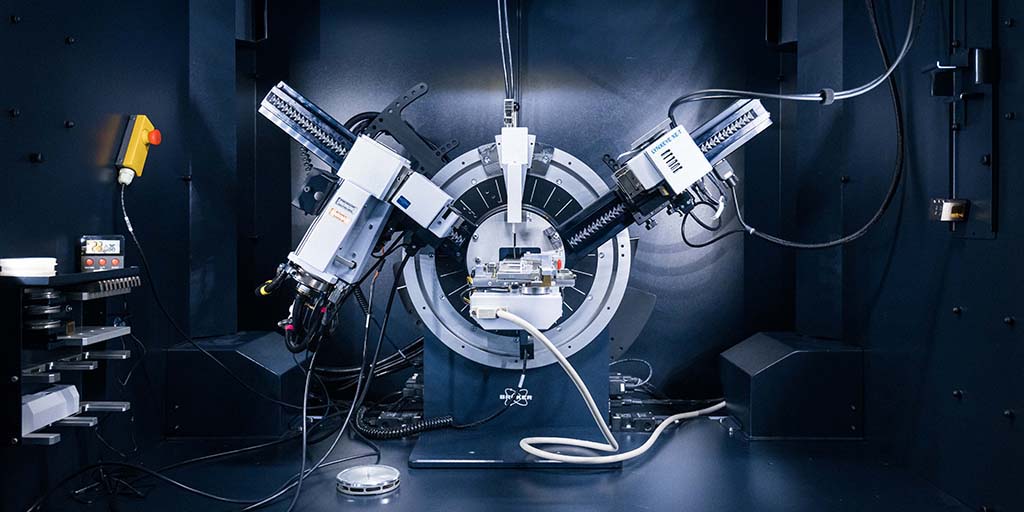X-ray diffraction
Minerals and most synthetic crystalline products can be swiftly and reliably identified using the X-ray diffraction method. The amount of each component can be also be estimated.

The method is relatively inexpensive and accurate. From samples even less than 1 mg in weight, identification of the major crystalline phases is possible. By the Rietveld refinement method, it is possible to estimate the phase composition of crystalline mixtures, if all the components are well crystalline and they have first been identified by both their crystal structure and chemical composition. X-ray diffraction studies can be complemented by other methods like electron optical analysis. If the crystallite size of the material is in nanometer scale, its average crystallite size can be determined from the shapes of the diffraction peaks. XRD method is suited for the study of crystalline substances, but the relative content of an amorphous component can also be semi-quantitatively assessed. GTK’s Espoo research laboratory is equipped with Bruker D8 Discover instrument, and Outokumpu with PANalytical CubiX3 Minerals.
Characteristics of clay minerals must be analysed before use
Some clay minerals have unique properties when compared to other minerals. They may show cation exchange capacity, interaction with water or interaction with organic compounds. They can also swell to several times their original size.
Clay is used as a mineral product for mechanically stabilising soil and bedrock structures. Mineral clay swelling in weakness zones of the bedrock seriously impedes underground construction, which makes advance accurate identification and analysis of their characteristics necessary.
Stable clay minerals are also used as fillers in the paper and paint industries. The versatile applications for clay minerals have made them an important subject for research. For example, GTK’s laboratory is cooperating with a customer in an on-going method development project related to bentonitic clays.
GTK’s X-ray diffraction laboratory conducts mineral analytics to internal and external customers, including for example:
- Characterization of bentonitic clays
- Determination of the components in dry cement
- Identification of industrial and ore minerals
- Determination of the mineral composition of ballast material and sand
- Identification of the components in technical products
- Mineralogy of the weakness zones of underground rock facilities
- Identification of components in biogenic fuels and peat from ash
